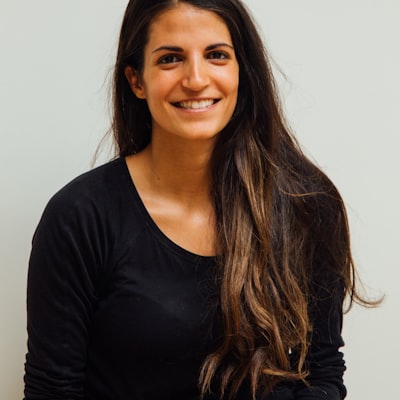Creative Services: Identifying Collaborators and Partners

What are creative partners? Creative Partners is a dynamic, full-service digital agency , specializing in brand communications, interactive communications, social media and visual marketing, with studios in Los Angeles and Stamford, CT. Founded in 2021 by managing director Sandy Ginsberg and creative director Ramy Sivan, the company prides itself on finding "the right partner for the right job." They claim that they help clients "build strong, authentic, relationship-based connections with their creative partners," and help those creative partners become more successful.
How do creative partners to build strong, authentic, relationship-based relationships? According to the Creative Partners website, "creative partnerships develop a sense of understanding, mutual respect, and the foundation for effective communication, each contributing to the other's success." What does it mean to have a good working relationship with your creative partner? The CPA says, "Creative partnerships cultivate long-term professional growth and provide a point of connection between your company's strategy and its creative teams."
Are there any other benefits of working with creative partners? As one creative partner, Jessica Klein pointed out, "Working with other creatives has been extremely valuable and I feel as though my time is being used very effectively." She went on to say that her creatives "are sharing their stories, giving advice, and creating lasting friendships." Another creative partner, Greg Dent, was bullish in his testimony before the US Senate Commerce Committee saying, "When creative companies partner together, a great deal of growth can be experienced." He went on to say that a large number of businesses would fail without creatives because companies with creatives are more creative, have better ideas, and are more willing to try something new. Finally, Kevin Keller, a vice president at The Atlantic, which publishes Wired and Salon, said that working with creative partners is a "natural path" for most companies to take.
So where do you draw the line, though? Some companies view working with creatives as a bit like licensing, which provides financial security but limits creativity. Others, such as TKM, view it as providing a vehicle for creatives to develop their business. Still others, such as McKinsey, believe that the benefits far outweigh the risks. Here are some thoughts on this issue:
If a company has two or more creatives working together in a short term project, then the benefit is greater when one partner leaves, than when all the partners stay. This works especially well if one partner specializes in marketing, while the others offer creative services. However, in the case of TKM, who does the marketing and what sort of creative services does the company have under contract?
Some creative relationships can be mutually beneficial, in terms of cost and time and effort expended. An example of this is TKM and BCG, which coordinate a large number of projects. Even when one partner is more technically capable and successful than the other, a joint venture relationship can allow each partner to maintain a footing in their respective field. One partner may also have the requisite skills to perform a particular task better than the other, while keeping costs low.
It's also important to consider the effect of long-term commitments. A creative team may want to work together for several years, but if they have a major project that they must get done, where will they draw the line? Does the creative partner who is less technically capable want to continue working without the benefit of his or her partner? Is the creative shop going to grow faster by adding another partner or is it going to remain static with only one partner?
There are many ways to determine whether a creative partner can do the job alone, such as performing the task alone at first, but gauging performance in social media channels such as Facebook and Twitter. The benefit of having a social media account is that it gives creatives a venue through which to interact with customers, receive helpful feedback, and show off their work. However, these platforms also encourage collaboration. Once a creative partner begins posting on social media pages, it becomes easy to tell whether they truly want to perform. Being clear about what you want accomplished as well as what your standards are, helps ensure that you don't waste time on someone who won't meet them.
